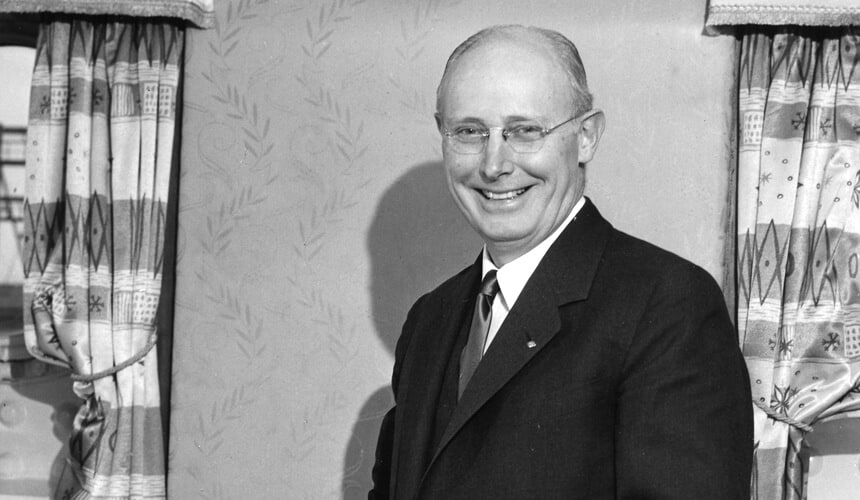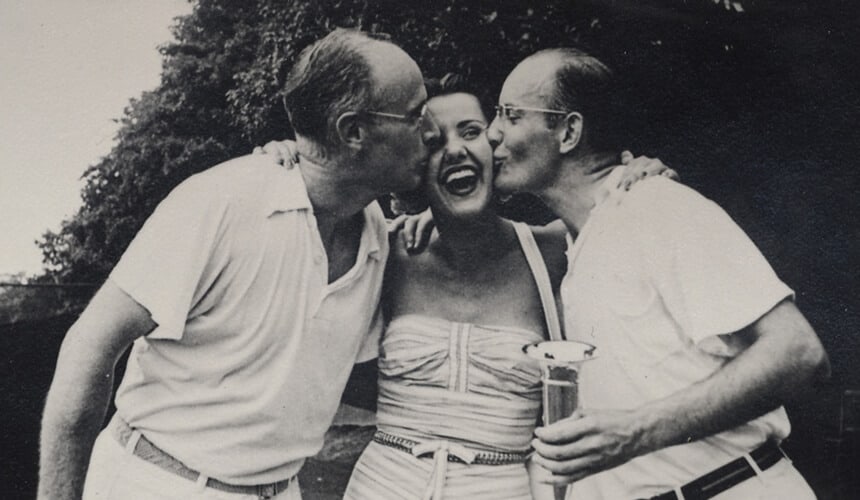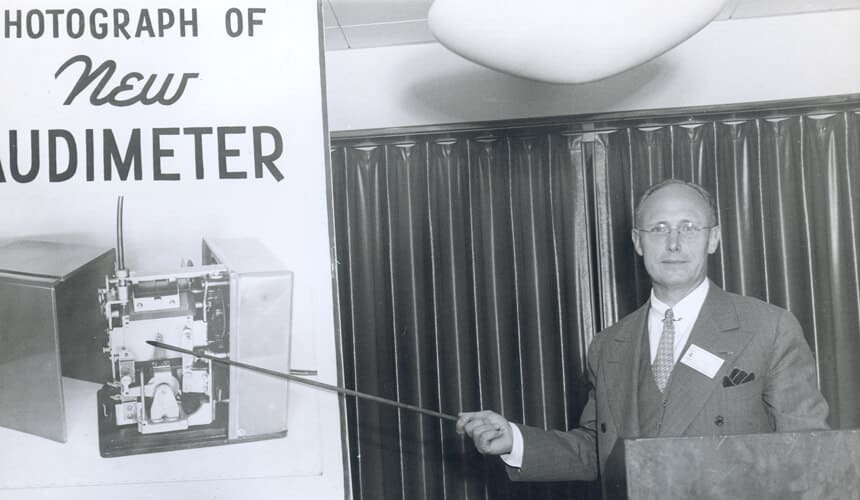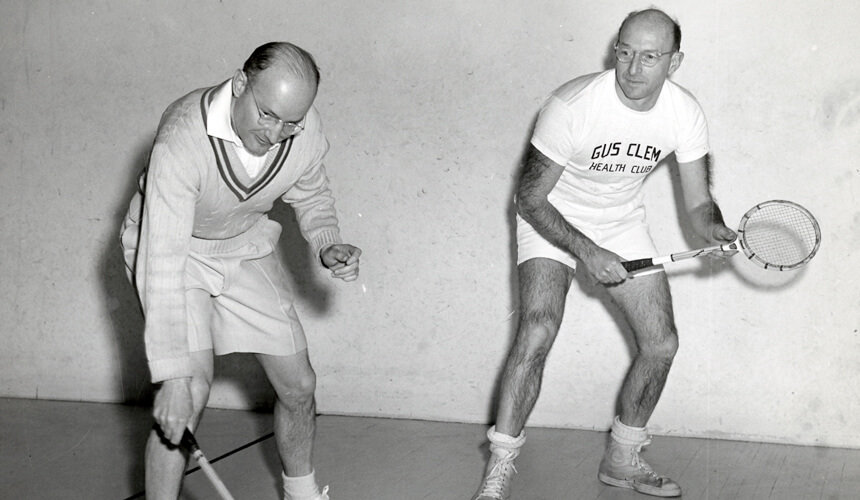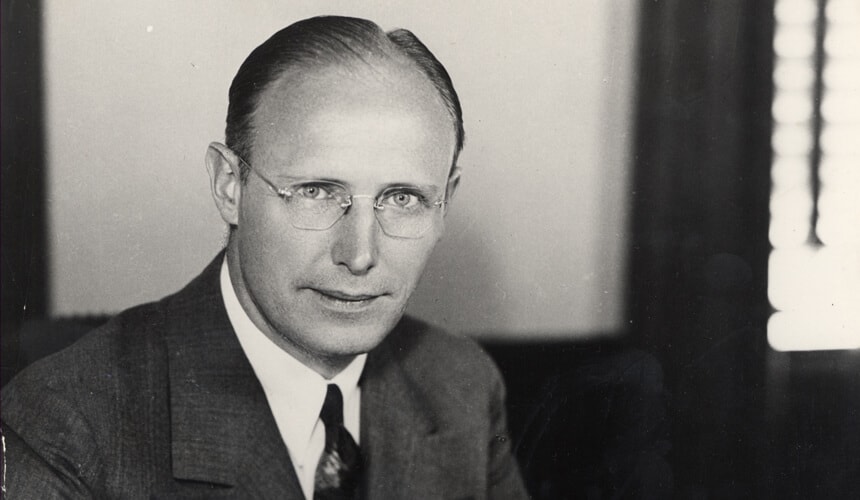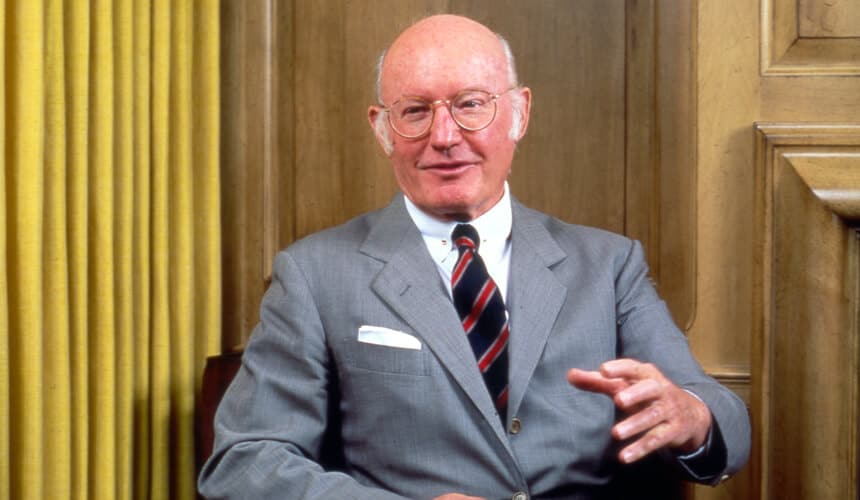Arthur C. Nielsen Sr.
Measured success: from family business to worldwide corporation
Building an empire
Few industries have a better read on American media habits than the Nielsen Corporation, a global marketing research firm that tracks what people watch, listen to, click on, and buy. Though the company is now a worldwide enterprise, it started as a family business that was literally indebted to the UW community.
View a timeline of the Nielsen Corporation.
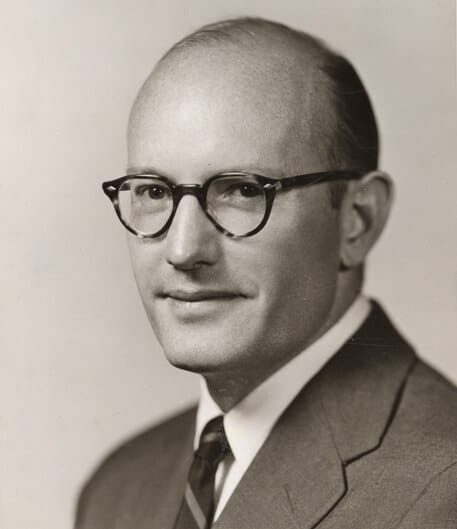
Image courtesy of the UW Archives, #S16989.
A few years after graduating with a degree in electrical engineering, Arthur C. Nielsen Sr. BS1918 borrowed $45,000 (around $600,000 in today’s dollars) from his college fraternity brothers. He started a Chicago-based company that initially focused on assessing machinery and producing surveys of drugstore and retail purchasing trends.
But the company faltered in its early years and twice narrowly avoided bankruptcy. At one point, Senior was so cash poor that he enlisted his 13-year-old son, Arthur C. Nielsen Jr. BPh1941, as a shareholder. Junior turned over the $56 he’d made from odd jobs so that his father could travel to New York for a sales pitch. “My mother berated him that night, ‘You took that poor boy’s life savings and poured it down the rat hole!’ Turned out to be a pretty good rat hole,” Junior said in a documentary.
In the spring of 1936, Senior met two MIT scientists who had invented the Audimeter, a device that, when attached to a radio, recorded the station it played. Nielsen bought the device and its patent and quickly developed the first radio indexes. Five years later, the company had doubled in size. Junior joined his father’s company after WWII and took over the administrative duties, which enabled Senior to focus on entrepreneurship.
Watch Arthur C. Nielsen Jr.’s appearance on television show What’s My Line?
The timing of the partnership was perfect. Nielsen developed new methods for tracking television habits, which turned the company into the leading firm of its kind by the 1950s. As Senior once quipped to Junior, “If you can put a number on it, then you know something.”
A legacy for children, students, and athletes
While at the UW, Senior spent much of his time with the two great loves of his life: his future wife, Gertrude Smith (attended 1920), and tennis, which he would play well into his seventies. The Nielsens gave campus the Nielsen Tennis Stadium, which was the largest indoor tennis facility in the world at the time of its dedication in 1968.
From The Park
The price of light is less than the cost of darkness.
“During the long winters, life for a tennis enthusiast was close to intolerable,” Senior said of his time in Wisconsin. “We tried to find an indoor tennis facility, but our efforts were in vain. Occasionally, we were allowed to use the armory for an hour — but most of that time was spent on our hands and knees, marking the court lines with chalk. In desperation, we tried tennis on ice, using skates, but this was a complete failure. The balls became wet, and dampness soon broke our racquets. And the balls, on striking the ice, skidded in a very abnormal way. Obviously, tennis and ice don’t mix.”
After Senior’s death in 1980, Gertrude shifted her philanthropic attention to children and families, eventually opening the Gertrude B. Nielsen Child Care and Learning Center in Northbrook, Illinois. The center specializes in early childhood education and development.
The Nielsens were also longtime supporters of the Wisconsin School of Business. In 1990, the A.C. Nielsen Center for Marketing Research opened in honor of Junior as the only full-time market-research program in the United States.
 87° F
87° F